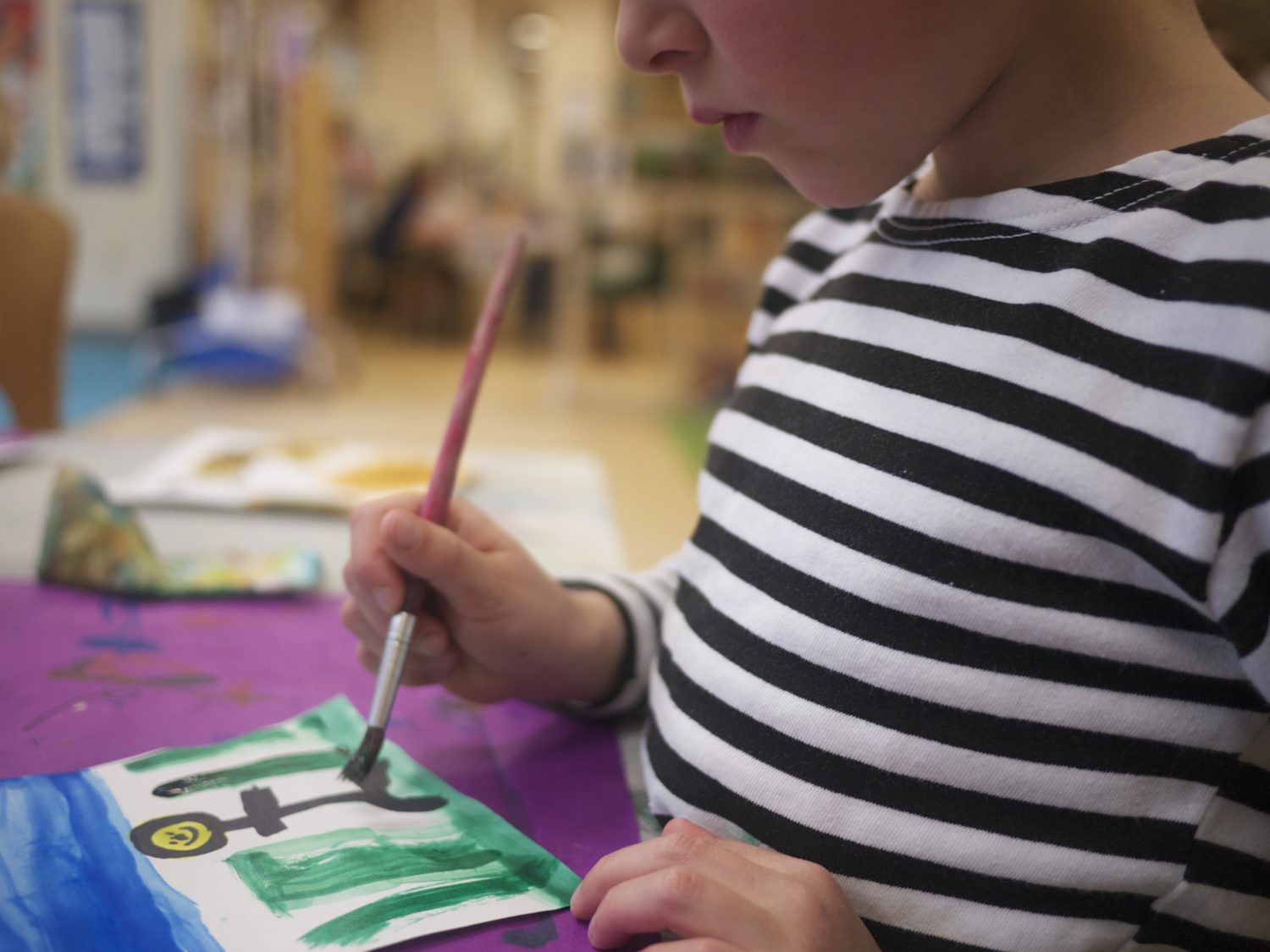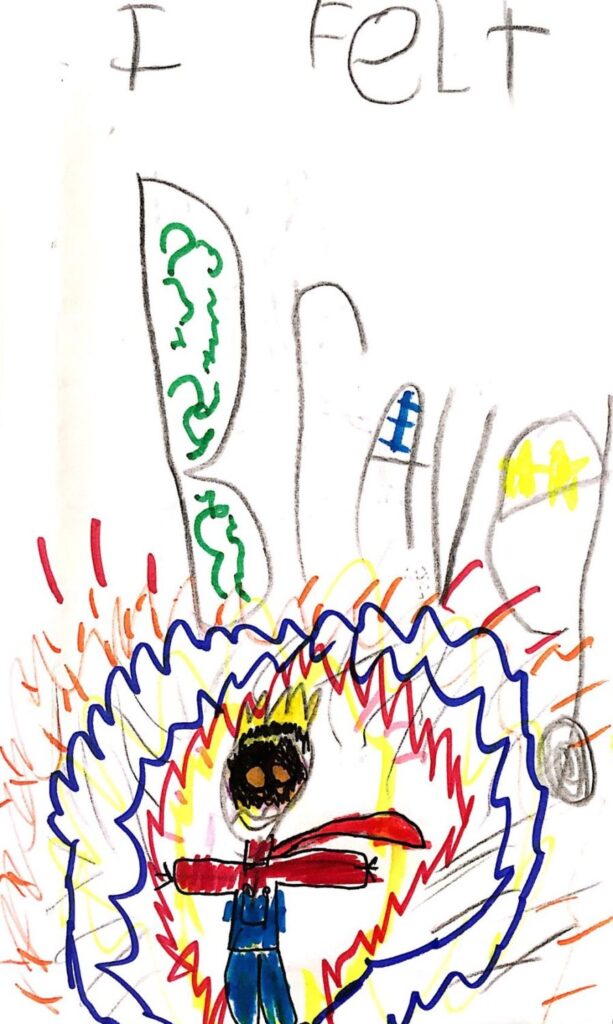I Felt Brave

I am a teacher, and it seems (and I know I am not alone in this ) that my teacher brain does not turn off when I leave the school grounds. I am constantly thinking, wondering, and exploring as I search for connections, knowledge, and all the nuggets and gems that I can explore myself – as well as bring back to the learning community that I am working with.
Over the past few weeks, I have had two experiences that threw me into the realization that in my search for all of these things, I am ultimately searching for beauty and truth.
First, there was the annual Opal School conference, Reading the World, were we spent two-and-a-half days with a variety of educators considering the ways in which literacy, creativity, and sustainability drive patterns of artistry in teaching and learning. Within the presentations, stories, and conversations with participants and colleagues alike, the idea of literacy being something that lives all around us and does so in beauty really spoke to me. The idea of the aesthetic dimension was brought forward for participants to chew on as we contemplated the intersections of literacy, creativity and sustainability. Vea Vecci, an atelierista from the schools in Reggio Emilia, defines the aesthetic dimension as
“a process of empathy relating the Self to things and things to each other…it is an aspiration to quality that makes us choose one word over another, a color or shade, a certain piece of music, a mathematical formula or the taste of food…It is an attitude of care and attention for the things we do, a desire for meaning; it is curiosity and wonder; it is the opposite of indifference and carelessness, of conformity, of absence of participation and feeling…’ (Art and Creativity in Reggio Emilia, 2010: p 5).
At Opal School, we strive to bring this idea to all that we do, including literacy. Instead of concentrating solely on the technical aspects of reading and writing, we invite children to play with their ideas, their stories, their imaginations, and everything around them. In this dimension, the children are invited to search for meaning within themselves and in their world. When they do so, their interpretations of beauty and truth are encouraged to emerge.

A few days after the Reading the World conference, I attended a concert – a familiar experience and one of my favorite things to do in my free time. There was a moment, when I was watching this musician – alone on a stage, with only a guitar and next to a lone pine tree -.when I felt everything – love, grief, connection, loneliness, heartache, loss, celebration…everything. And I knew I was not alone…the sold out venue was totally still and quiet – everyone was silent and listening with complete reverence, respect and awe. The musician, Phil Elverum of Mount Eerie, was sharing the story of the loss of his wife to cancer, leaving him and their toddler-aged daughter behind. His songs were a vessel to display his grief, his process, his highs, his lows, his memories… but ultimately he was showing the beauty of his love – a love that had grown from their first meeting and is still growing, even after death. He was showing us his “opposite of indifference and carelessness, of conformity, or absence of participation and feeling…”
Above all, as an educator, this made me think of literacy.
We all learn to read and write in order to tell our stories and share our experiences. Experiences give us stories to share with others, stories we can put into print and read again and again to relive our encounters, relationships, and surprises. Experiences also give us pieces for the imagination to tinker with. Every time we revisit our stories we can offer new interpretations and expand upon the meaning we are making of our experiences. Reading is an act of seeking meaning. It begins when we arrive in this world, making sense of everything we encounter. We soon learn to create our own texts so that others will in turn make meaning of them, and, subsequently, of us.
The children are taking everything that they know and everything that they experience and are applying it to everything that they encounter, especially in the classroom. Through playing, creating together, sharing ideas and listening to the ideas of others, children are bringing the act of literacy learning to a whole different level than just the act of technically reading and writing. There is so much more to it than just that.
When we look at learning to read and write in these ways, it becomes easier to see literacy, as described by Karen Gallas, as the “process of merging who we believe we are with what we show we can do.” Learning evolves into knowing and words and written language become more efficient means through which we can explore more and more of the world. Reading the world offers us a way to travel through time and space and imagine possibilities where we are more able to merge who we believe we are with what we show we can do. Both who we believe we are and what we show we can do become gradually more layered, and we become more sophisticated about the way we think about our relationship with the world. And, perhaps most importantly, we learn that we make the world.
When I think about literacy in this way, I see strong connections to the children in my classrooms and that musician on the stage. They are both experiencing and making meaning of everything that surrounds them and using writing and storytelling as a way to process their reading of the world. In the Maple Room, our community of kindergartners and first graders, we are in the middle of our personal narrative genre study. We are practicing and experimenting what it feels like to write our stories, to write about the things that happen to us. As we do it, we are sharing with our audience a merger of who we are and what we can do. For example, in Wilco’s story about the time he rode a roller coaster at Oak’s Park, he was sure to include all the important details about the moment: his ability to ride it because he was tall enough, how fast it went and what color it was. He also made sure that he added another very important detail about what happened to him after the ride:

The kindergartner in a classroom and the musician on stage both are examples of what is possible when we open ourselves up to art and beauty.
Where are you seeing examples of what is possible when we open ourselves up to art and beauty?
Where are you noticing the “attitude of care and attention for the things we do, a desire for meaning” in your learning communities and even in your world?
Where are you seeing this type of literacy in your world?
For more information about the aesthetic dimension: Art and Creativity in Reggio Emilia: Exploring the Role and Potential of Ateliers in Early Childhood Education by Vea Vecchi.
For more information about Phil Elverum of Mount Eerie, visit here.

Thank you for this beautiful and brave post, Nicole! I think the ideas of seeking beauty and truth with an attitude of care and attention can not only help us make meaning ourselves but also to make meaning of the meaning others are making. (!)